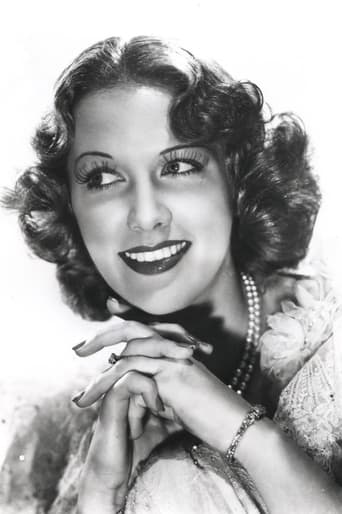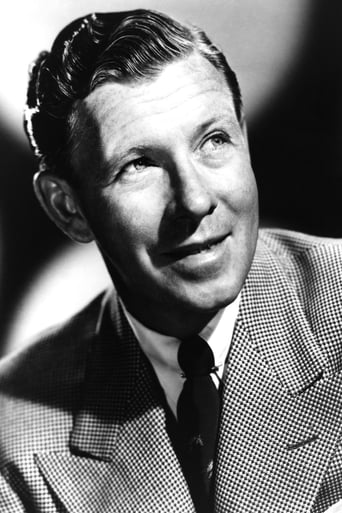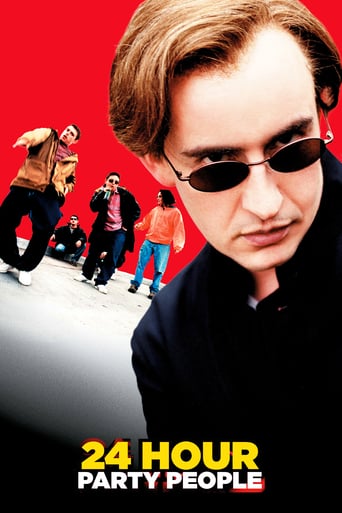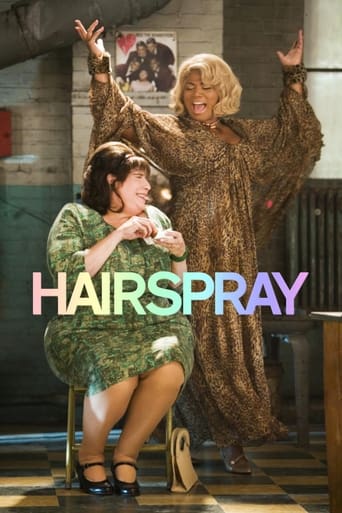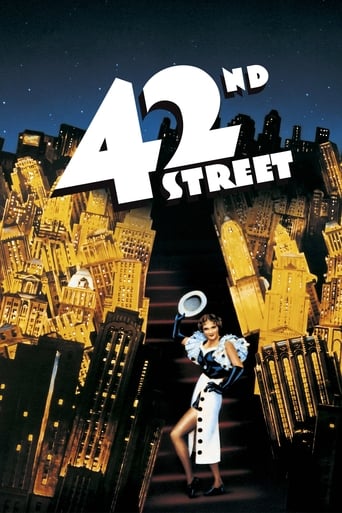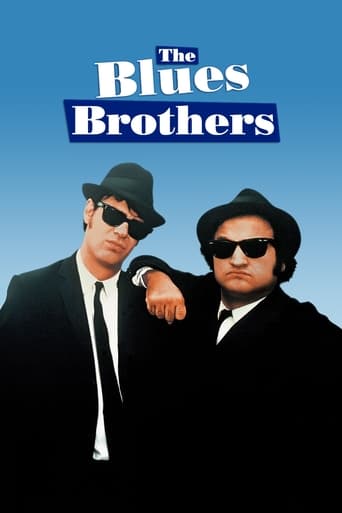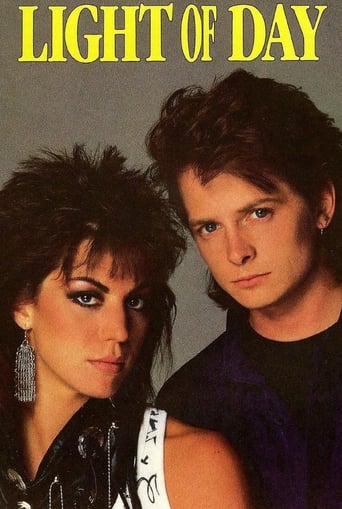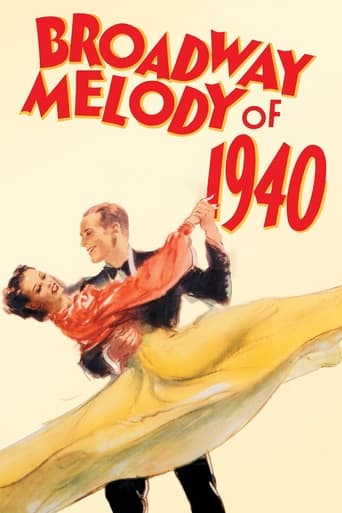

Broadway Melody of 1940 (1940)
Johnny Brett and King Shaw are an unsuccessful dance team in New York. A producer discovers Brett as the new partner for Clare Bennett, but Brett, who thinks he is one of the people they lent money to, gives him the name of his partner.
Watch Trailer
Cast
Similar titles
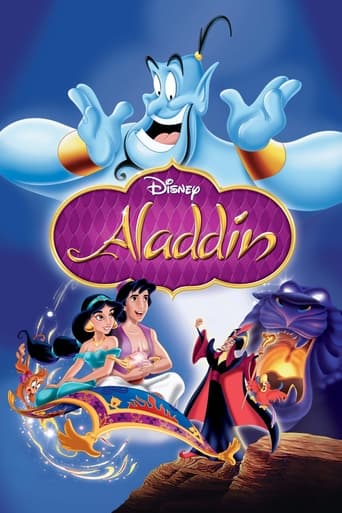

Reviews
Touches You
Beautiful, moving film.
Absolutely brilliant
It is an exhilarating, distressing, funny and profound film, with one of the more memorable film scores in years,
Copyright 9 February 1940 by Loew's Inc. A Metro-Goldwyn-Mayer picture. New York opening at the Capitol: 28 March 1940. U.S. release: 9 February 1940. Australian release: 4 July 1940. 11 reels. 9,144 feet. 101 minutes.SYNOPSIS: Astaire and Murphy play a couple of struggling song-and- dance men in New York. Their act is seen by a big theatrical agent who picks out Astaire to be the dancing partner in his big new show opposite the big star, Powell. Through an accident of mistaken identity Murphy gets the job instead, but by the end this is straightened out and Astaire gets not only the part but, apparently, the girl as well.COMMENT: Fine dancing, good songs, silly story. True, Frank Morgan conjures up a mildly amusing portrait, but the romantic triangle with the principals is not only dull but does them all — particularly Astaire — a distinct disservice. Judicious cutting would certainly help. We're surprised that editor Sewell left in so much rubbishy padding between the musical numbers. Taurog's middle-of-the-road direction lacks any sparkle and finesse that might have lifted the boringly straight script into the realm of passable entertainment. Fortunately, once they put on their dancing shoes, Astaire, Powell and Murphy kick up some suitable storms!This was the last of The Broadway Melody series. It would seem to promise much in the union of Astaire and Powell (with George Murphy thrown in as a bonus) — plus a Cole Porter score — but alas in dancing terms it delivers somewhat less than expected. Too much attention is paid to the trite surrounding story.
This is the fourth and last film in MGM's "Broadway Melody" series, which began back in 1929. I've watched them all (for the first time) recently, and it's interesting to see how they evolved...and without question, this is the most sophisticated...although the two previous films were very entertaining.This is also the only time that Fred Astaire and Eleanor Powell ever appeared in film together. She the top female dancer, he the top male dancer, and they are great together.Here, a friendly...and then not so friendly competition between two friends, both dancers develops. Fred Astaire plays the somewhat more talented dancer, while George Murphy plays the slightly less talented dancer. In a mix-up involving the great Frank Morgan, Murphy gets selected to appear with Eleanor Powell in a big Broadway production over the more talented Astaire. The two partners (Astaire and Murphy) breakup, but can't quite separate. Meanwhile Murphy turns up drunk and unable to perform, and Powell finally realizes that her partner (in both dancing and love) was supposed to be Astaire.Astaire was great. Murphy was very good. What was the difference? Try watching each of them when tap dancing...look at just their feet. Murphy occasionally makes tiny missteps that are hardly noticeable. Astaire is always perfect.Supporting cast members include Ian Hunter as the producer.Two of Cole Porter's best compositions are found here. "I Concentrate on You" is an exceptional song, and is wonderfully sung here by Douglas McPhail and danced by Eleanor Powell and Fred Astaire. And perhaps the best song of all time -- "Begin the Beguine" -- is featured here, with Astaire and Powell dancing to 2 different interpretations in a wonderful routine (although I was not impressed with the vocal by mezzo-soprano Lois Hodnott.It's tough to criticize this film, although MGM made a big mistake here. They considered filming it in Technicolor, which probably would have resulted in it being one of the most remembered of the MGM musicals. But due to the war, they settled for black and white. A shame. For that reason alone, I'm giving it only a very strong "7".
So many of the reviews imply that Fred's most famous partner, Ginger Rogers, was overrated when compared to Eleanor Powell. I strongly disagree with this contention, at least in regard to this movie. There is no doubt Powell could tap dance circles around Rogers, and as this movie shows, she could certainly do the splits (in the one fairly ridiculous number with the sailors), but I found her character development herein sadly lacking when compared to most of Rogers' characters in her movies with Fred. Much of the movie revolved around Fred's interactions with George Murphy, with only occasional glimpses of the Powell character. With the Astaire/Rogers movies there is much more banter/interaction between the two leads. The one exception is the scene quite late in the movie where, unbeknown to Fred, Powell watches him carry out a whimsical solo dance while toting around a picture of her, this followed by a scene where there's finally some substantial interaction during a luncheon date. The highly touted Begin the Beguine dance number may have been spectacular, but I actually found this solo dance by Fred more enjoyable because of the feeling/emotion involved. This all being said, Powell is certainly a spectacular dancer, and I agree that it would have been nice to see what results further collaboration with Astaire produced. I also agree that she had an amazing smile--she may have exerted as much energy in maintaining that as she did the hoofing.And I would be remiss if I didn't ask why the film-makers found it necessary from time-to-time to put an imbecile in Astaire movies (think Edward Everett Horton, who was often an annoying distraction in the Rogers movies). Frank Morgan's antics may have been mildly amusing initially, but after awhile it became embarrassingly obnoxious, including the lame running gag with the fur cape.
"Broadway Melody of 1940", like its' predecessors, is all about music and dancing, strung together with the slightest of stories. Nobody watches these films with the intent of getting a good story. They want the entertainment.This is one of the better entries in the series. Mostly because of the fantastic dancing that is done by the two leads, Eleanor Powell and Fred Astaire. This is the only time that they were paired in a film, and it shows that when he's dancing, Astaire needs only one thing. Ginger Rogers. One of the major flaws in this film has nothing to do with the story. It has to do with the fact that Astaire and Powell really don't have any chemistry together. As others have said on this posting board, it really appears that while they are dancing the same steps, in the same scene, they couldn't be further apart, emotionally. It's been said that Astaire was afraid to dance with Powell because he felt that she was one of the few who could dance better than him. He's right.I would imagine that there must have been a great deal of hype when this film came out, about them dancing for the first time together. It's a shame that the results weren't better.George Murphy and Frank Morgan offer terrific supporting work.Worth renting, but ultimately disappointing.

